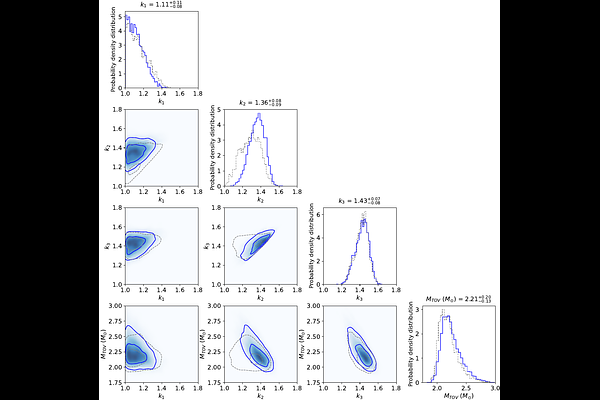Inferring Neutron Star Nuclear Properties from Gravitational-Wave and Gamma-Ray Burst Observations

Inferring Neutron Star Nuclear Properties from Gravitational-Wave and Gamma-Ray Burst Observations
Hsin-Yu Chen, Ore Gottlieb
AbstractRecent discoveries of long gamma-ray bursts accompanied by kilonova emission prompted interest in understanding their progenitors. If these long-duration bursts arise from neutron star mergers, similar to short gamma-ray bursts, it raises the question of which physical properties govern burst duration. The mass of the merger stands out as a key factor, strongly influencing the lifetime of the merger remnant, which in turn determines the burst duration: lighter mergers that form long-lived remnants produce short bursts, whereas more massive mergers result in short-lived remnants that collapse into black holes, powering longer bursts. In this paper, we compare merger rates from gravitational-wave observations of LIGO-Virgo-KAGRA with the rates of kilonova-associated long and short gamma-ray bursts, to identify a characteristic total neutron star mass that separates the two burst classes at $1.36^{+0.08}_{-0.09}$ (median and 68\% confidence interval) times of the neutron star Tolman-Oppenheimer-Volkoff mass. This result suggests that massive neutron stars could survive an extended period after merger. Our findings are robust against substantial observational uncertainties and model assumptions. Moreover, we uncover correlations among various characteristic masses tied to dense nuclear matter, introducing a novel and independent approach to constrain neutron star nuclear properties through separated and combined gravitational-wave and gamma-ray burst observations.